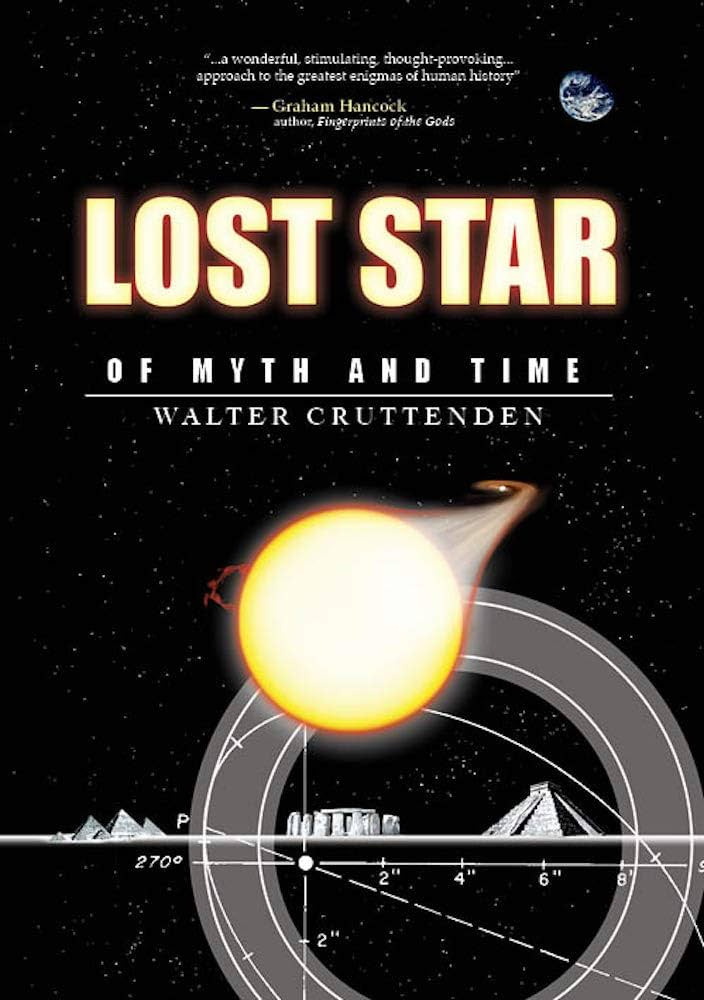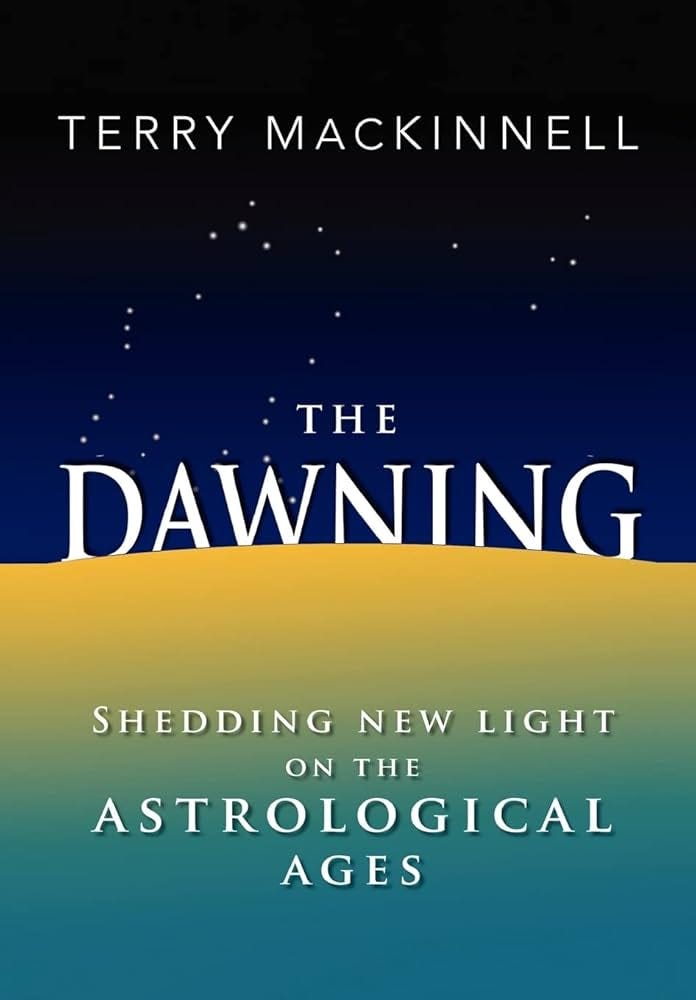The Age of Aquarius *is* modernity
Astrologer Terry MacKinnell's surprising dating of the Aquarian Age finds support in the work of the Austrian mystic Rudolf Steiner.
Imagine you’re taking the train from London to Paris. You’re making your way along the carriage to the bathroom, when you receive a phone call: It’s your mother, and she wants to know where you’re going. If you simply answered: “the toilet”, well, you wouldn’t be wrong. But you’d be missing a much more important piece of information, namely that you’re off to the French capital for the weekend.
I sometimes have the feeling that we astrologers are a bit like this. What gives me this feeling is our collective confusion about the greater astrological context in which we find ourselves. We’re pretty good when it comes to the observable planets, their motion around the zodiac and the cycles they generate. But we’re not good at all when it comes to understanding the 25,800-year cycle that drives history at a more fundamental level: the Great Year.
The Great Year is another way of referring to the cycle of precession, whereby the stars of the zodiac gradually shift with respect to the Earth’s orientation to the Sun. At the rate of about 1 degree every 72 years, the stars rising at the Spring Equinox each year gradually shift backwards through the zodiac.
The Yugas
There are two main ways of dividing up the precessional cycle, one of which is the Vedic “Yuga cycle”. A revolution in our understanding of this cycle came in the late 19th century, when Sri Yukteswar, the guru of Paramahansa Yogananda, published his book of 1894, The Holy Science:
In the book’s introduction, Sri Yukteswar linked the precessional cycle to the Vedic Yuga cycle. He explained that over the course of 12,000 years, dharma (virtue) rises over four ages, from the Kali Yuga, the Iron Age, an age of materialist illusion and separation from the divine, to the Satya Yuga, the Golden Age, when dharma is at its highest and human beings are closest to God. Over the course of another 12,000 years, dharma falls in a reverse sequence of the ages, from the Satya Yuga down to the Kali Yuga once again, giving a cycle of 24,000 years.
You’ll note that 24,000 years is 1,800 years short of 25,800 years, which is the current estimate for the length of the cycle, based on the current rate of precession. Was Sri Yukteswar wrong? One take on this question comes from the author of the book Yuga Shift, Bibhu Dev Misra, who appeared on World Astrology Report in two episodes about the Yuga Cycle:
Bibhu believes we entered the transition out of the Kali Yuga this very year, at the Spring Equinox, and will now undergo a long period of purification: what the Greeks called ekpyrosis.
I’m undecided on whether Bibhu or Sri Yukteswar’s model of the Yuga cycle is correct. Bibhu’s work depends on the assumption that the Great Year does indeed last 25,800 years, as suggested by the current rate of precession. But what if the rate changes over time? For an exploration of this question, see Walter Cruttenden’s fascinating book Lost Star of Myth and Time, which theorises that our Sun is actually part of a binary star system, something specified by Sri Yukteswar in The Holy Science. Cruttenden suggests that the rate of precession could rise and fall, due to the orbit of the Sun around its partner, potentially leading to a Great Year of 24,000 years, as specified by the great saint.
But we’re getting a little off topic. The Yugas are one way of dividing up the Great Year. Another, more popular in the West, is to divvy it out among the 12 zodiacal signs, leading to 12 “astrological ages”. Of course, one of these 12 ages is allotted to the sign of the Water Pourer, giving us the Age of Aquarius, the one astrological idea besides Mercury retrograde that everyone has heard of, regardless of their level of interest in astrology. And just like Mercury retrograde, there are a lot of misconceptions out there…
Confusion and the Aquarian Age
Astrologers can’t seem to agree on when the Age of Aquarius actually begins – ask 10 astrologers, get 10 answers. Part of the problem is that we suffer from a lack of textual sources on these astrological ages and how they’re supposed to be defined. Believe it or not, ancient astrologers didn’t have much to say about these ages, if anything at all.
Should they be based on the unequal constellations, and thus last different lengths of time, as Carl Jung believed? Or should they be based on the sidereal zodiac, which divides the zodiac into twelve 30° signs roughly aligned with the constellations? Or should they be defined by other concerns, like the appearance of “avatars” of the age, like Christ?
This lack of clarity leads to a variety of ideas about when the Age of Aquarius arrives. The Age of Pisces is generally held to be the era of the two great devotional religions, Christianity and Islam, which emerged under its sway. Two fishes, two faiths. Some astrologers thus date the beginning of the age to the birth of Christ, giving us another 125 years or so before the Aquarian Age begins in around 2150. Others believe the age will arrive in around 600 years’ time, when the vernal point moves into the sidereal sign of Aquarius.
But I think there’s a better answer. And it’s been provided to us by an Australian astrologer named Terry MacKinnell. MacKinnell has dedicated his astrological career to researching the astrological ages, and first became obsessed with the question of when the Age of Aquarius began in 1987. He has come up with a very precise dating for the beginning of the age — one that you might, at first glance, find surprising: the year 1433.
The Age of Aquarius and the 1960s
The popular conception of the Age of Aquarius is of some kind of futuristic, egalitarian, spiritual utopia. If that’s what you have in your head, MacKinnell’s dating won’t make much sense. But these ideas about the Age of Aquarius have a relatively recent pedigree. In the late 19th century, HP Blavatsky’s Theosophists appeared, as part of a wider occult revival, speaking of the dawning of a glorious, more spiritually attuned “new age”. In the 20th century, people began to associate the New Age directly with the dawning of the Age of Aquarius. Carl Jung popularised the idea in his book Aion: Researches into the Phenomenology of the Self. And in the 1960s, it was off to the races for the Aquarian Age, particularly after the launch of the rock musical Hair in 1967, which included that song:
As a result, popular ideas about the Age of Aquarius are strongly influenced by the idealistic spirit of the 1960s. And the 1960s did indeed carry a heavily Aquarian flavour. After all, in early February 1962 we saw a remarkable pile up of all seven traditional planets in the sign of the water-pourer:
If ever there were a planetary configuration to prefigure an Aquarian Age, well, it appeared in the sky on February the 5th, 1962.
But the idea that the Age of Aquarius constitutes a glorious era of hippy utopianism isn’t one every astrologer subscribes to. In traditional astrology, Aquarius was ruled by the planet Saturn. That doesn’t imply fun and games, or even fairness. What we have to bear in mind is that no sign is really “better” than any other. Each of them has elevated manifestations, as well as a shadow. Aquarius can be high-minded, ingenious, democratic and humanitarian; it can also be cold, dogmatic and prioritise impersonal, abstract systems over the flourishing of the human spirit.
Once we strip away old assumptions about the Aquarian Age, we can become more open-minded to other possibilities about when it actually began. And here, we turn to Terry MacKinnell’s work.
Terry MacKinnell’s dating of the Aquarian Age
The best place to go to understand Terry’s work is his own blog, Demystifying the Aquarian Age or his book on the astrological ages, The Dawning. But while you’re here, I’ll try to convey the basic idea.
In 1987, almost out of the blue, Terry became haunted by the question: “When does the Age of Aquarius begin”? And he set about trying to answer it. When a client doesn’t have a birth time, an astrologer will “rectify” their chart by reconstructing it based on the events of their life. Terry tried to do the same thing, but the “client” was history itself, and the “chart” he was looking for was a timeline of the astrological ages.
What gave him an edge in answering this question was his familiarity with both Western and Vedic astrology. Part of the problem we tend to have with dating the astrological ages is that we’re working with very long periods of time, each age lasting some 2,150 years, and so drawing a fine line between them is difficult, especially given that we have far more information about recent centuries than past millennia. But Vedic and traditional astrology have ways of dividing the signs into smaller sections, and it was these that Terry turned to “rectify” the Aquarian Age.
In Vedic astrology, one key technique sees the division of each zodiacal sign into 12 parts, generating what is known as the dwadashamsha chart or “D12”. Hellenistic astrology and medieval astrology do something similar – the dodecatemoria, known in English as the 12th parts. Each sign is divided into 12 equal sections of 2.5° each. Each of these parts is in turn assigned to one of the signs, starting with the sign being so divided. Here’s a table showing the 12th parts of every sign:
And so Terry hypothesised that the astrological ages, including the Age of Aquarius, consist of 12 “sub-ages” lasting around 178 years each. This made the job of trying to rectify the age much easier: it’s far simpler to match 12 periods of 178 years to history than one 2,150-year period, because you have much more historical data to correlate to the various signs.
Using this technique, he realised that the 15th century was actually the best match for the beginning of the Aquarian Age. And eventually, after trying various exact dates, he arrived at his current assessment of when the age began: the year 1433, almost six centuries ago.
A lot of pivotal historical events came soon after this year. In 1453, the Ottoman empire finally captured Constantinople, the last bastion of the Roman empire. Not long after that came the Renaissance, the invention of the printing press, and the Protestant Reformation. This was really the beginning of the progressive disempowering of the Catholic Church and the rise of science, capitalism, globalisation and so many of the trends that define the modern world.
What’s particularly interesting about Terry’s dating is that the 15th century is roughly when historians place the beginning of the early modern era. Their dating for the beginning of modernity ranges a little – some say it began in 1500, others 1492, when Columbus “discovered” America, while others give 1453, when Constantinople fell.
These years don’t match Terry’s dating precisely, but in the context of an age lasting more than 2,000 years, they’re nevertheless very close. I would argue that this provides strong backing for the accuracy of Terry’s work. After all, if the astrological ages mean anything at all, shouldn’t they be detectable in the historical record by people who know nothing about astrology?
Implied by Terry’s dating of the Aquarian age to 1433 is that the Age of Pisces began in the year 715 BC. This is very close to the legendary founding of Rome, said to have taken place in 753 BC. And so, we can see that by Terry’s reckoning, the Age of Pisces coincides very closely with the entire span of the Roman Empire. It was founded close to its beginning, and effectively ended with the fall of Constantinople in 1453, very close to its end.
So there is interesting historical backing for Terry’s Aquarian Age. But support also comes from a more esoteric source: the Austrian clairvoyant Rudolf Steiner.
Overflows and Rudolf Steiner
The Austrian mystic and clairvoyant Rudolf Steiner (1861-1925) is enjoying something of a revival in spiritual and occult circles these days. In the last years of the 19th century, Steiner was involved in the Theosophical Society and in 1902 became the head of its German branch. Later, Steiner became disillusioned with Theosophy. He thought the Christian element the movement was being pushed aside in favour of an emphasis on Eastern teachings. And so he split from Theosophy, founding his own movement, Anthroposophy, in 1913.
Steiner was a genius and a genuine polymath, making important contributions to many fields, including the arts, education, through his Waldorf schools, and agriculture, with his invention of biodynamic farming techniques. But he also wrote and lectured voluminously on esoteric topics.
Some of his work attracting most attention today concerns his conception of evil, which he held primarily to be the work of two adversarial spiritual beings: Lucifer and Ahriman. According to Steiner’s conception, Lucifer tempts human beings to spiritually ascend too quickly, and to fall prey to the temptations of egoism and pleasure-seeking. Ahriman, by contrast, wants to convince us that there is no realm of spirit – and that we must focus entirely on mastery of the material world. As an esoteric Christian, Steiner preached that Christ represented the balance between these two forces, a balance that we should all aim to emulate. At the heart of Steiner’s work was what he called “spiritual science”, the application of scientific rigour to the understanding of the spiritual world. My own astrological work has led me to believe that this is one of the key themes at work in the times we’re living through. The CIA seems to agree.
Steiner also claimed that, following incarnations of both Lucifer and Christ, Ahriman would incarnate in the world, somewhere in the West in the early 21st century. He said that the world would be prepared for his incarnation through an obsession with technology – in particular, electrical technology. Steiner specifically said Ahriman would incarnate as a human being, but many observers wonder if his incarnation might in fact take the form of the AI singularity, supposedly coming to a planet near you in the next few years.
Regardless, the accuracy of Steiner’s descriptions of the current world, delivered more than 100 years ago, have convinced many people, this writer included, that he really did have acute prophetic vision. His lecture collections on Ahriman’s incarnation testify to that:
But it’s what Steiner said about the Age of Aquarius that interests us here. Steiner said that the Age of Pisces began around the year 1413, very close to when Terry dates the beginning of the Age of Aquarius. And he said that the Age of Aquarius wouldn’t begin until the year 3573.
Hang on a second – doesn’t that mean that MacKinnell and Steiner are a whole astrological age out? Not so fast.
To understand why Steiner actually supports Terry’s dating of the Aquarian Age, we have to understand a key concept that Terry brings to his work on astrological ages: overflows.
Terry argues that the astrological ages aren’t like discrete blocks, one following the other, but more like waves that wash over each other. As one age builds, another declines. When an astrological age begins, the sign associated with the age is actually at its weakest. It’s at this moment that its influence starts to grow, although the previous sign still dominates. Over time, it increasingly permeates the age, until by the end of the age, the sign attains its maximum of influence.
What this means is that in 1433, when Terry’s Age of Aquarius began, it was the sign of Pisces that was at its greatest influence, having been building since 715 BC. I think this makes sense. Think of what was going on in Europe at this time, at the end of the medieval period. At this time, the Catholic church was all-powerful, not only holding total spiritual power, but great political power, too. And yet this was also the time when the cracks in the church’s rule began to show. The period of 1378 to 1417 comprised the Western or Papal Schism, when not just one, but two popes, one in Avignon, one in Rome, claimed authority over the church. Church reformers like John Wycliffe and Jan Hus were also emerging, criticising the church’s corruption. This is the kind of thing we might expect to happen at the end of an age: the old order comes under attack.
And so, back to Steiner. Why did he say the Age of Pisces began in 1413? Well, as a talented clairvoyant, Steiner may have been perceiving the world as it actually was, not as it would come to be. What he may well have detected at that time was the strength of the sign of Pisces as an influence in the world.
Terry’s conception of the astrological ages is that each of them is defined by the influence of two signs, one waning, one waxing. For him, the Age of Aquarius should more accurately be called the age of “Pisces-Aquarius”, given that it begins with Pisces as the senior partner and dominating influence.
In my opinion, imagining a battle between Piscean and Aquarian forces explains rather a lot about the modern world. For example, if we look to American politics, we can contrast the Christian right (Pisces) with the liberal left (Aquarius). We can even see this dichotomy within liberalism itself. After all, many great thinkers have pointed out that modern liberalism retains Christian values, it just generally tends to reject the “god” part. Think of liberal concern for the poor and those at the margins of society, and Christ’s example of concern for those very same groups. For Terry, Pisces still dominates the times, and it won’t be until around halfway through the Aquarian age, around the year 2503, when Aquarius will have the edge over Pisces.
For me, Terry’s approach to the dating of the Aquarian Age is the one I’ve found that makes the most sense. So if you want to know where we’re really heading on this great train – besides “the bathroom” – it’s well worth digging into. Terry will be joining me very soon on World Astrology Report on YouTube, so if you enjoyed this article, keep your eyes open for a video with Terry later this month.














Another book you might be interested in is The TYCHOS Our Geoaxial Binary System…. In it he argued that we are likely in a double binary system and the binary star system we live in is with the Sun and Mars. Sri Yukteswar, In The Holy Science basically says we are in a double binary… that’s how I read it! Anyhow here’s the link https://www.tychos.space - it’s a free book on another note… they have found that precession is speeding up… so 72 might be an average… In the Tychos the great year is 25344yrs
Oooh fun, love this theory of the AoA starting in the early/mid 1400s. It makes sense to chart is against historical record. That's when tarot emerged (in Northern Italy), as well as the printing press (as you mention), and, later that century, the Doctrine of Discovery (completely reshaping the world).